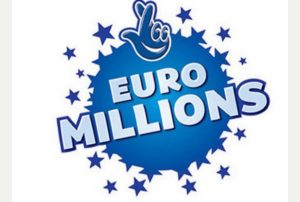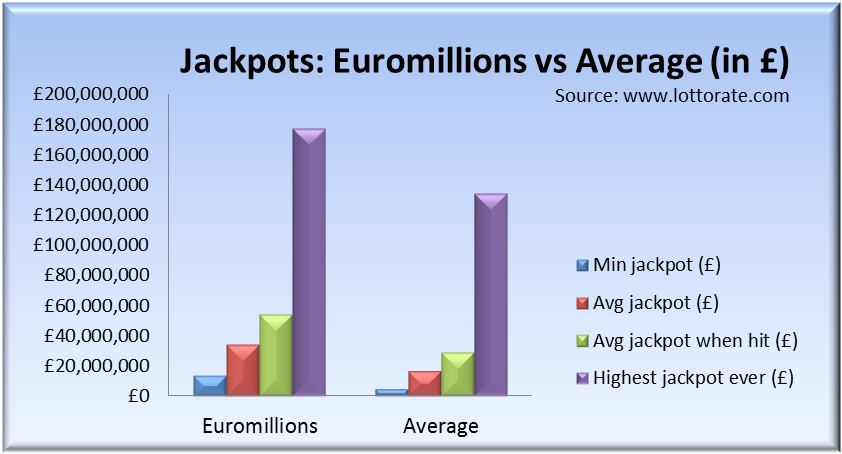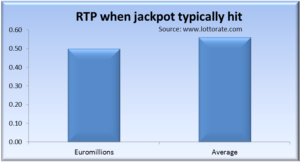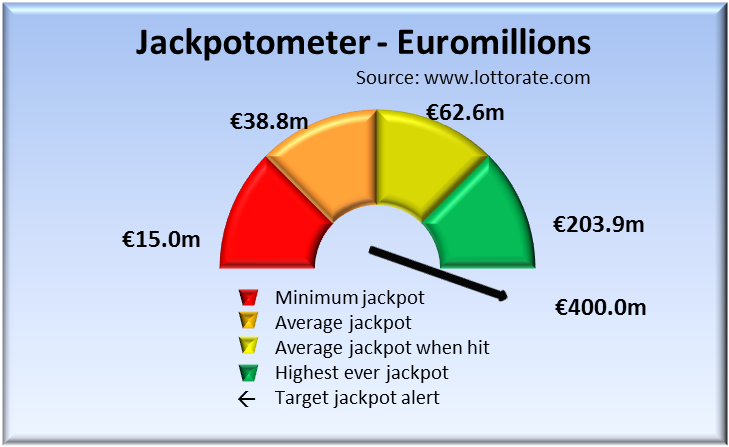
Euromillions
Name
Operator
Type
Country
Website
Founded
Lottorating
Euromillions
Multistate lottery via national operators
Multi country lottery
Europe
National operator sites, e.g. national-lottery.co.uk
2004
33/50
Introduction
Overview
Euromillions is established as one of the top three lotteries in the world. It is larger than its other euro lotto rivals eurojackpot and viking lotto. For more on other euro lottos, see our other lottery review pages.
.
Where Available
It is available in 13 territories: Andorra, Austria, Belgium, France, Ireland, IoM, Liechtenstein, Luxembourg, Monaco, Portugal, Spain, Switzerland and the UK. Founding members were Spain, France and the UK. The UK currently makes up around 25% of sales.
How it Works
Date and time of draws
The draw takes place on a Tuesday and Friday at 9.30 pm CET.
No. of balls and how to hit the jackpot
The odds of winning the euromillions have lengthened over the years to 139m to 1 by adding more balls to the bonus pool. There are now 50 main balls and 12 bonus balls in this draw.
Other Variations
In the UK there's a new and generous millionaire raffle in the latest version of Euromillions. This helps to redistribute some of the price difference between the UK's ticket price of £2.50 vs €2.50 in other countries. Since the latest ticket price increase in September 2016 (from £2) much of the increased pot value is in fact being returned to players now in the form of guaranteed million pound raffle prizes.
Depending on the day you buy a ticket and how big the jackpot is - and thus the number of tickets that are sold - raffle prizes can be worth a whopping 10%-20% of stakes, or 20-40% of total payouts. For your chances of winning a raffle prize it's better to play when fewer tickets are being sold as there are two guaranteed millionaire tickets (2 x £1m) won on every draw just in the UK. The return to player (RTP) value of the raffle in the UK is thus much better on a Tuesday when the jackpot is small! The raffle thus offsets the extra cost in pounds vs euros when played in the UK. It also covers much of the difference between what is really paid out and the lottery's target payout of 50% for prizes over sales. Note that special Superdraws are the main method that euromillions employ to dole out extra cash left in their reserve fund. With superdraws the European operators all agree to seed the jackpot such that it starts at 100m euros, for example.
In Spain, the new version of euromillions also now offers a millionaire raffle but it only operates on Fridays and only 1 prize of €1m is paid out to a player in Spain. Your odds there are better than in the UK though because of lower ticket sales in that country. As it's such a large portion of the payout in Spain, I wonder why anyone would play the euromillions on a Tuesday over there... Other countries have versions of the same raffle: in France, for example, they offer one €1m prize on both the weekly draws. In Ireland and Portugal they have a Euromillions Plus variation where you get additional prizes for a further €1 spend.
Price, Tickets & Sales
Ticket Price
 The ticket price has been increased again across most countries to either €2.50 or £2.50 in the UK (see raffle comments above). This makes the euromillions one of the most expensive lotteries in the world. Euromillions operators have had the usual onslaught of accusations of profiteering since the price change but payouts have also increased overall. Yes, euromillions operators should make more money on this lotto product provided sales do not fall too much as a result of the price hike, but overall the target return to player (RTP) remains at 0.5 or 50%. The effect of some of the new price and odds changes in September 2016 is discussed in the various sections below.
The ticket price has been increased again across most countries to either €2.50 or £2.50 in the UK (see raffle comments above). This makes the euromillions one of the most expensive lotteries in the world. Euromillions operators have had the usual onslaught of accusations of profiteering since the price change but payouts have also increased overall. Yes, euromillions operators should make more money on this lotto product provided sales do not fall too much as a result of the price hike, but overall the target return to player (RTP) remains at 0.5 or 50%. The effect of some of the new price and odds changes in September 2016 is discussed in the various sections below.
Tickets Sold Per Draw
Euromillions, the established transnational lottery sells approximately 2.5x the number of tickets per draw than its closest European competitor, the fairly recent eurojackpot. Overall it has revenues nearer 5x the size of eurojackpot since it offers 2 draws per week rather than 1. Tickets sold per draw averaged around 25m across Europe.
Sales per draw
In terms of average sales volume per draw, euromillions is the largest lottery in the world. Before the recent price change it was grossing around €53m of sales per draw on average at the €2 or £2 price point. Since the price increase to €2.50 (or £2.50) ticket numbers are likely to decline slightly - at least in the short term until some of the increased prize payouts, such as the better raffles, start to be 'felt' by players. The price increase though should offset lower ticket numbers in terms of overall sales volume.
With more money available to distribute and advertise jackpot sales, the hope is that ticket growth will also be achieved. Lottery sales on euromillions can reach 50m tickets per draw on big rollovers. Since the new odds and price changes in Sept 2016, we expect this to rise further since not least because a) jackpots will be harder to hit, b) they will therefore reach the maximum cap of €190m more often and c) rollovers at cap amount are allowed to roll down to the lower tiers for more weeks now (if the jackpot is not won).
Odds
Prize Table
Odds of hitting the jackpot
There are a vast number of prize tiers on euromillions depending on how many main and bonus balls you correctly predict. The payouts themselves vary according to the amount of money available in a draw and the numbers of winners who share the correct numbers, because payouts work on a percentage share of pooled ticket sales. The average prize payout table is shown here for a euro country such as Spain and also one for the UK:
This lottery has again increased the number of bonus balls (from 9 to 12 now) in order to lengthen the odds of winning the jackpot. The result of this is that jackpots are won less frequently and will roll over to the large capped amounts more times per year (a great source of publicity for the game). The odds of winning the jackpot are high at 1 in 139m and there are only three other lotteries that have higher odds still (Superenalotto, Powerball and Megamillions).
Balls and Bonus Balls
Average prize (€)
Average prize (£)
Odds
5 and 2
5 and 1
5 and 0
4 and 2
4 and 1
3 and 2
4 and 0
2 and 2
3 and 1
3 and 0
1 and 2
2 and 1
2 and 0
Raffle
58,000,000
263,196
27,245
2,665
142
90
50
16.4
12.4
10.4
8.8
6.9
3.8
1,000,000
50,000,000
227,665
23,567
2,305
123
78
43
14.2
10.7
9.0
7.6
6.0
3.3
1,000,000
139,838,160
6,991,908
3,107,515
621,503
31,076
14,126
13,812
986
707
314
188
50
22
2,950,000
Notes...
- Average jackpot size is its average size when hit (see more on average jackpots later)
- The prize column in euros is if you are playing the euromillions in Spain. The prize column in pounds is if you are playing in the UK. Payouts and prices do vary slightly by country.
- The raffle prize in Spain is treated differently to how it is in the UK (see variations section above). Also, the odds of hitting the raffle prize in the UK are calculated from an average Friday base draw (from Camelot numbers).
Odds of winning any prize
The odds of winning any prize (1 in 13) are good on euromillions when compared to some other lottos. The lowest payout level is one where you get a return for matching just 2 balls from the main pot. Better still, this bottom tier payout is also more than just your stake of €2 (typically €3 for example). This makes euromillions the best lottery of those we looked at in terms of frequency of winning more than just your stake. The new changes to payouts and odds in September 2016 made little difference to the frequency of winning a prize.
Jackpots
Minimum jackpot
The minimum jackpot is a very generous €15m which grows at around €8m per draw. Effectively then, the 'worst' jackpot you might hit would be worth around €23m. A few times a year, special superdraws or event draws are used to promote euromillions in which the minimum jackpot is set at €100m. These superdraws are often used by Camelot to make up for the shortfall in returning prizes to players from normal weekly payouts - which on their own do not quite reach the target 50% RTP. For more on RTP, see later.
Average jackpot
If you're playing on subscription or direct debit the average size a jackpot will be in any given week, including the minimums and those rolled over many weeks, will be around €38m - a little higher than it used to be before the odds change in September 2016.
Average jackpot when hit
 The average jackpot on euromillions is estimated at around €62m when it is hit, up from €51m before the recent odds and minimum jackpot change. This is based on the minimum seed amount plus the contributions made to the jackpot each draw when it rolls over until the time it is likely to be hit. In this last year the real average was around €55m.
The average jackpot on euromillions is estimated at around €62m when it is hit, up from €51m before the recent odds and minimum jackpot change. This is based on the minimum seed amount plus the contributions made to the jackpot each draw when it rolls over until the time it is likely to be hit. In this last year the real average was around €55m.
Highest jackpot ever
The jackpot on euromillions is capped at €190m, meaning that if it reaches this level through rollovers, then after five more draws the top jackpot is closed and shared amongst winners of the second tier, matching just 5 plus 1 bonus ball. During those five extra draws, if the jackpot is not hit, the lower tiers also benefit from extra rolldown cash that would have otherwise been added to the capped jackpot.
Before September 2016 the jackpot was held for just 2 draws after the cap had been reached. Together with the increase in jackpot odds from 113m to 138m, this should mean that a) €190m jackpots will happen more frequently each year and b) lotto operators will be able to promote these mega-jackpots for longer. From a marketing perspective, this makes sense, especially as they compete for publicity with the other mega lottos such as the Powerball and Megamillions in the US and the eurojackpot (and certain national lottos) in Europe. From a player's perspective, it's a shame they didn't increase a cap a bit too in order to offer some real value (see comments on RTP later).
Jackpot winners per year
Despite the long odds of hitting the jackpot, the sheer number of tickets bought each week mean that there will still be 20 winners of the jackpot each year. That's around one every couple of weeks or so although they'll often hit together (and share the booty), when some of the megajackpots are on offer.
Contribution to the jackpot
32% of prize money or 16% of stakes used to go into the jackpot pool. This has been tweaked recently with the Sept 2016 changes in a number of ways. Initially, a much higher portion of cash is put into growing the jackpot but this declines after five rollovers with the difference now going into the euromillions reserve fund (for jackpot seeding and superdraws etc.). When the jackpot hits its max, all cash that would normally go into the jackpot is rolled down and paid out for a few weeks to winners of lower tier prizes. Given that the odds of hitting the jackpot have increased, the larger contributions to jackpots and larger jackpots actually mean less in terms of returns to players (see below). Minimum jackpots of 15m euros also apply now.
Return to Player
Introduction
In the UK, 50% of sales are returned to players with 28% going to good causes, 5% to retailers and 12% in duties. The remaining 5% is spent on admin/operating costs. The returns you face when you play though will very much depend on the size of the jackpot. When jackpots roll over and become large (or via superdraws), you face much better value than when jackpots have just been reset. Note though that raffle prizes run contrary to this: you have much better odds of hitting a guaranteed million £/€ ticket when there are less people playing.
RTP when first seeded
If you play the day after a jackpot has been hit then the potential value of prizes that can be won is around 40c for every euro spent.

Average RTP
On an average week if you play on subscription, your RTP will be better at 0.44 as you will be playing at all jackpot levels.
RTP when jackpot typically hit
The 'average' size of a jackpot when it's hit is €62m. If you're playing then, your RTP is 0.5. This is the same as the projected 50% that euromillions aims to pay out to players. Note that the operators of euromillions need some flexibility when it comes to returning funds to players. If many small new jackpots are hit early, for example, the reserve funds they have to 'seed' the minimum jackpots will decline and vice versa. They often use superdraws to maintain their 50% payout target. RTP is very similar in the UK to other countries despite the ticket cost difference (£2.50 versus €2.50) and this is achieved by offering a generous raffle payout of 2x £1m guaranteed each draw.
Best RTP
When the jackpot gets up to its max of 190m euros and is then capped, the return to player (RTP) is, sadly, not yet positive for players. This means that if you were to buy every ticket at this level, you would still lose money - quite a lot in fact, as the RTP at this level is around 0.88. When the jackpot is capped, money still gets added to the payout pot at lower tiers, however, so player value is still growing. In fact, the new rules on euromillions mean that lower tier payout levels can still continue to grow for another four draws (though less than normal as euromillions tuck a bit more away for rainy days, seeding, and superdraws etc. when jackpots are high). So if we assume then that the pot increases by around the same average amount of 9m euros per week, then the overall special jackpot and extra tier cash can grow another €40m or so. At this level, the euromillions just about gets into positive territory, were it not for the reduction that you need for your chances of sharing your €190m (which is actually quite probable).
Payouts and Taxes
Annuity vs Cash
There are no annuity options on most European lotteries and the amount advertised is a cash sum.
Taxes
It is also tax free except in Spain, Switzerland and Portugal.
Summary
Jackpot alerts
For a solid multi country lottery it takes some beating. Jackpots are large and regular and it outsells most lotteries worldwide in value if not in tickets (which is also why it's more expensive to play than most, especially in the UK). The generous minimum jackpots and frequent small payouts at the lowest tiers keep the interest going too. Overall the RTP is very similar to the eurojackpot and which of these two to choose of these will usually depend on what size the jackpot is that week. As there are no taxes (with some country exceptions) or annuity issues, what you see advertised is what you will get.
eurojackpot and which of these two to choose of these will usually depend on what size the jackpot is that week. As there are no taxes (with some country exceptions) or annuity issues, what you see advertised is what you will get.
If you're looking for value, or positive RTP, then you'd need the jackpot to get well past its maximum of €190m+ before it's a sensible investment. You're unlikely though to be quids in then either as there's a good chance that your jackpot will be shared (and you'd be out of pocket if you were to buy every single ticket combination!). It's a bit of a shame that they don't let the jackpot get to say €300m before capping it as this would attract the jackpot hunters who are looking for great value and would add to the 'fever'. It would also allow them to compete with the Megamillions and Powerball jackpots in the US. Against that, though, is the fact that jackpot caps go a long way to sharing the millionaire love a bit further - as too the guaranteed raffle jackpots, which are even better value these days.
Pros
Good sized jackpots both minimums and averages. Generous prizes at the lower levels too. The raffle is even more generous - just wish that they didn't use such a messy raffle numbering system. Very expensive ticket prices but then again that's why they can afford to have so many large jackpots each year. No taxes and no annuity nonsense.
Cons
Jackpot cap means that it never quite gets to be a 'no brainer' in terms of value. Second tier prizes (5 plus 1) not as exciting as the eurojackpot or the big US multi-state lotteries, although they can get interesting these days when the main jackpot is capped.
Verdict
A solid and popular product that gets interesting in terms of jackpot size quite quickly. Note that (since there are no taxes in most euromillions countries nor the US-style annuity option nonsense) the capped €190m jackpot on euromillions is equivalent to a jackpot on the US Megamillions or Powerball of $470m! It's unlikely to be great value for jackpot hunters though as the jackpot is capped at €190m before it offers real positive return. If you live in Spain, I'd avoid Tuesday's draw as the millionaire raffle (which is worth plenty) is only offered on Fridays (que pena that you have to pay taxes on winnings there...).
Overall, the latest changes are interesting: ticket price hikes which have been slammed in the press as greedy (as usual) will result in longer and larger rollovers, which in turn, will create more of a splurge in the same newspaper columns... Euromillions lotto designers have also managed, weirdly, to spread a bit more love around too, creating many more single digit millionaires per year, which is always good. To play this or other lottos online, check out our preferred agents page.
